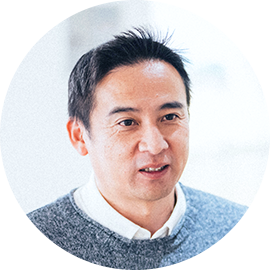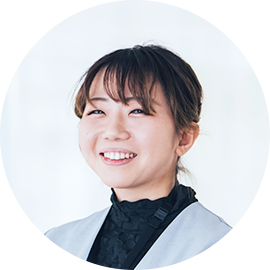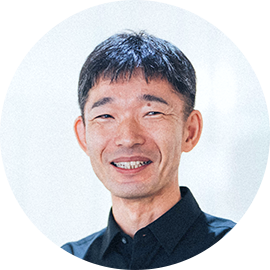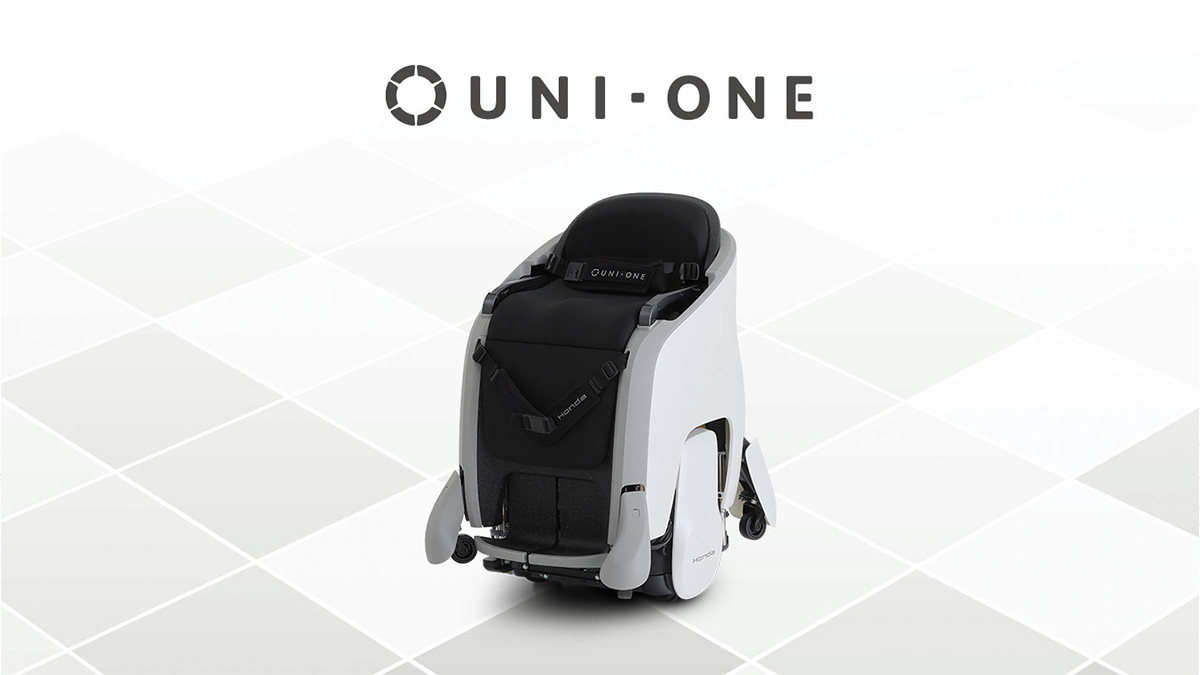A hands-free personal mobility device, UNI-ONE enables the user to steer by shifting their center of gravity while sitting, allowing them to move naturally in all directions as if they were walking, with both hands free. Honda’s new mobility device has a variety of potentials. Four team members of UNI-ONE development were invited to a round-table talk to reveal their passions for UNI-ONE, behind-the-scenes development stories, and anticipations for the future with UNI-ONE.

Chief Engineer
Frontier Robotics Domain
Innovative Research Excellence,
Honda R&D Co., Ltd.
View More
Close
Shinichiro Kobashi
Read More

Staff Engineer
Creative Solution Center,
Corporate Strategy Operations,
Honda Motor Co., Ltd.
View More
Close
Marika Mochizuki
Read More

Assistant Chief Engineer
Frontier Robotics Domain
Innovative Research Excellence,
Honda R&D Co., Ltd.
View More
Close
Tomokazu Sakamoto
Read More

Assistant Chief Engineer
Frontier Robotics Domain
Innovative Research Excellence,
Honda R&D Co., Ltd.
View More
Close
Daisuke Nohara
Read More
Regardless of disability or age, everyone wants to ride this mobility device.
To begin with, what kind of mobility device is UNI-ONE?
Different from a wheelchair, UNI-ONE is a mobility device targeted at a wider range of users, then. The aim was to develop a moving device that everyone wants to ride. Are there any specific designs you were fastidious about?

The UNI-ONE is characterized by its round body which is regarded as “not dangerous” by the people around it. We were careful about design not to make it too mechanical. Additionally, other features that bring out a sense of affinity include a seat made of sustainable materials and an easier start-up operation. Our aim is friendly mobility for the user and for the people nearby.
 From left to right: Daisuke Nohara, Tomokazu Sakamoto, Marika Mochizuki, Shinichiro Kobashi
From left to right: Daisuke Nohara, Tomokazu Sakamoto, Marika Mochizuki, Shinichiro Kobashi
What technical efforts did you make?

The UNI-CUB β, predecessor of UNI-ONE targeted only people without disabilities. It was designed that, when there were system errors, its main body fell over to force the UNI-CUB β to stop. But for UNI-ONE to be used by the wider range of people more safely and with peace of mind, our first challenge for UNI-ONE was to conceive a mechanism that will not fall over. Nohara took care of it really well.

The UNI-ONE had to be stable in both conditions with the seat raised or lowered. When the seat is down, its four legs stabilize the body, and when the seat is raised, the user can balance by shifting their center of gravity. A function was added to lower the body to stabilize UNI-ONE in the event of a system error while the seat is raised. However, achieving the right balance between size and stability was a challenge because the device needed to be as compact as possible to enter into crowded spaces.
 Left: Seat is lowered. Right: Seat is raised.
Left: Seat is lowered. Right: Seat is raised.
How high does the seat go up?

It goes up about 15 cm. When a small child sits on UNI-ONE, their eye level is higher than standing, allowing them to see the world from a completely different perspective. In a test ride, UNI-ONE brings a smile to faces of both children and adults.

The regular wheelchair user will also have a completely different view when their eye level is raised by just 15 cm. When in a wheelchair, you have to look up to talk to a standing person, but on UNI-ONE, your eye level will be close to that of standing people. This is one of the factors to please users.
 When sitting on the UNI-ONE seat raised, the user can talk at eye level close to that of standing person.
When sitting on the UNI-ONE seat raised, the user can talk at eye level close to that of standing person.
What is uniqueness of Honda in Monozukuri?
Please tell us if there was something you valued in the UNI-ONE development

One of the research and development scopes of Honda Robotics is the “expansion of the physical functions for people.”. Based on this scope, we value helping people and staying close to the people. The new mobility is incorporated with the technology to move while balancing, which we have researched since the development of the two-legged walking robot, ASIMO. We took advantage of robotics technologies we have nurtured up until now, in order to develop a mobility device that raises the user’s eye level for better communication with others and allows the user to enjoy freedom of mobility.

Generally speaking, a robot has an image of industrial machinery to streamline operations. However, Honda’s robotics technologies focus on people. The UNI-ONE is an outcome of our long-accumulated mobility technologies combined with our desire to serve people. I think it is a product very unique to Honda.
You mentioned “unique to Honda”. Is there something like a core in Honda Robotics Monozukuri?

Our attitude to keep the user’s perspective is what is shared with Honda’s Monozukuri.

We are always conscious about a viewpoint of how to help people. However, we are not manufacturing products from the perspective that “we do it this way because it is unique to Honda.” Those of us involved in Honda Robotics are taking on challenges of unprecedented mobility, so I could say we are also in pursuit of new uniqueness of Honda. In that sense, we are given the privilege of being self-centered in Monozukuri.

Unlike a motorcycle or an automobile, UNI-ONE itself is unprecedented, so honestly it was full of unknowns in the beginning. But everyone in the team accepted the fact and tried to find the right answers in limited situations. Because it is completely new mobility, our opinions did not necessarily lead to the right answers. We carried on the development based on this condition while adopting various opinions.
How to have fun with UNI-ONE and its potentials revealed in demonstration trials
Recently you conducted demonstration trials at Mobility Resort Motegi in Tochigi Prefecture and Suzuka Circuit Park in Mie Prefecture. What exactly did you do in these respective trials?

At Mobility Resort Motegi, we tested UNI-ONE for using mainly in crowded spaces. There are several facilities such as a museum called Honda Collection Hall and an amusement park called Mobility Resort Motegi Park within the premises of Mobility Resort Motegi. Since these facilities are located apart, walking to and from them can be inconvenient.
Therefore, we set up UNI-ONE stations at Honda Collection Hall and Mobility Resort Motegi Park for visitors to use UNI-ONE as a tool to move around within the premises like shared bicycles. If we have a system in which UNI-ONE automatically returns to the station after being dropped off inside Mobility Resort Motegi in the future, I think we can support mobility of many people.
 Night Museum at Honda Collection Hall: Honda Collection Hall opens at night for overnight guests of Mobility Resort Motegi and takes visitors on UNI-ONE for a tour inside.
Night Museum at Honda Collection Hall: Honda Collection Hall opens at night for overnight guests of Mobility Resort Motegi and takes visitors on UNI-ONE for a tour inside.

On the other hand, demonstration trials at Suzuka Circuit Park were more focused on use for amusement and leisure. Everyone experiencing UNI-ONE says it’s fun, so I realized it could also be introduced to the FUN area to enjoy riding. In a test ride event on a make-believe race circuit inside Suzuka Circuit Park, I was glad to see many smiley faces of children.
Moreover, in July this year, we integrated UNI-ONE with AR technology to create an attraction. With a tablet in hand, the user rides UNI-ONE and plays a game. UNI-ONE moves and turns according to scenes displayed in the tablet. From the time of UNI-CUB, I have thought the mobility device could offer something fun when combined with AT or VR. This demonstration trial has proven my thoughts.

The experience gave me a sense of immersion, and I felt as if I had been in a different dimension. The trial at Suzuka Circuit Park was significant for UNI-ONE in the sense of physical augmentation. I think I saw a new aspect of UNI-ONE.
 “Future Sky-collect energy and fly a rocket in space-”: UNI-ONE x AR experience at UNI-ONE special event booth at Suzuka Circuit Park
“Future Sky-collect energy and fly a rocket in space-”: UNI-ONE x AR experience at UNI-ONE special event booth at Suzuka Circuit Park
The UNI-ONE is to be exhibited in the Japan Mobility Show 2023 from October 26 to November 5, 2023. What do you want visitors to focus on for experiencing the device?

Reservation is open for people aged 16 years and older, but anyone three years or older can line up on site for a test ride. The AR experience attraction we tested at Suzuka will also be there for visitors to experience the fun of real-world physical sensations integrated with digital technology, as well as new values.

Because UNI-ONE is such uncommon mobility that it may be difficult to understand its advantages and significance in our life unless visitors actually take a ride. To tell the truth, when I saw it for the first time, I also thought it was weird. But once I joined the team and tried it myself, I realized it was a necessity in society. I do hope many people test ride UNI-ONE and get to know the fun and fascination of it.
People-to-people communication brought by UNI-ONE
Lastly, please tell us your dream to achieve through UNI-ONE.

As UNI-ONE is a hands-free mobility device, it goes well together with the AR attraction mentioned earlier. I am still investigating if it is the best solution for using UNI-ONE, but I am hoping that it could be used for many other purposes besides mobility. Other than the FUN area, UNI-ONE could reduce physical burdens of those who work standing up when using it at work, and UNI-ONE might expand professional possibilities for people with disabilities. I believe that UNI-ONE is versatile in various situations and usable for everyone.

When my grandparents were weakened, I saw them becoming depressed or aggressive. I realized how deprivation of freedom of mobility affected people’s inner selves and stripped them of happiness. I dream of a future to come in which not only aged people but anyone could freely go anywhere they wish and stay happy forever.


My dream is that UNI-ONE blends in our life and becomes ubiquitous in our society. UNI-ONE’s appeal is an ease of mobility without operation for people of any age with or without disability. I will be very happy when people’s potentials of mobility and activities are expanded with the help of UNI-ONE.

UNI-ONE’s major characteristic is that the user and accompanying people can move together hand in hand. This device is meant mainly for mobility, but I also hope it can serve as a means for active communication between people with disabilities and those without when they walk side by side and converse, as well as between young children and adults when children’s eye level is closer to that of adults.
We talked about Honda’s uniqueness. Prioritizing helping people and being people- and society-friendly, we advance in the direction we believe in, taking in customers’ opinions. What is created out of this approach could be naturally called unique to Honda. I would like UNI-ONE to penetrate in the society as new mobility that connects people to people, while finding usages specific to UNI-ONE in a variety of situations.
 Together with UNI-ONE in Japan Mobility Show 2023 venue
Together with UNI-ONE in Japan Mobility Show 2023 venue
Original article issued on November 1, 2023








It is a mobility device that enables the user to steer by simply shifting their center of gravity while sitting, allowing them to move naturally in all directions as if they were walking. Our goal was to create a vehicle that allows the user to move in a manner similar to walking and is suitable for use in crowded spaces. We once created a unicycle-like mobility vehicle called UNI-CUB β under the same concept, but UNI-ONE has evolved with a seat that moves up and down, so that the user can match their eye levels with those of standing people. We aimed to use robotics technologies to create an innovative mobility body that people of any age with or without disability feel like riding. This is how UNI-ONE was born.